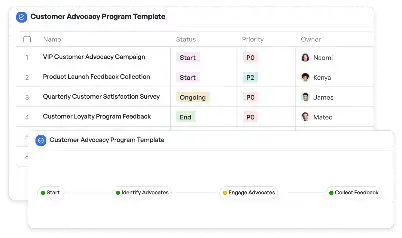Invasive vs Non-Invasive BCI Deployment Checklist
Achieve project success with the Invasive vs Non-Invasive BCI Deployment Checklist today!

What is Invasive vs Non-Invasive BCI Deployment Checklist?
The Invasive vs Non-Invasive BCI Deployment Checklist is a comprehensive guide designed to streamline the deployment of Brain-Computer Interface (BCI) systems. BCIs are cutting-edge technologies that enable direct communication between the brain and external devices. This checklist is particularly crucial as it addresses the unique challenges of deploying both invasive and non-invasive BCIs. Invasive BCIs involve surgical implantation of devices into the brain, offering high precision but requiring rigorous medical protocols. Non-invasive BCIs, on the other hand, use external sensors and are less intrusive but may have limitations in signal accuracy. This checklist ensures that all critical steps, from initial assessment to post-deployment review, are meticulously planned and executed, making it an indispensable tool for professionals in neuroscience, healthcare, and technology sectors.
Try this template now
Who is this Invasive vs Non-Invasive BCI Deployment Checklist Template for?
This template is tailored for a diverse range of professionals involved in BCI deployment. Neurosurgeons and medical practitioners can use it to ensure the safe and effective implementation of invasive BCIs. Rehabilitation specialists and therapists will find it invaluable for integrating non-invasive BCIs into patient care. Researchers in neuroscience and cognitive science can leverage the checklist for experimental setups. Additionally, technology developers and engineers working on BCI systems can use it to align their deployment processes with industry standards. Whether you are in a hospital, research lab, or tech startup, this checklist is designed to meet the needs of all stakeholders in the BCI ecosystem.

Try this template now
Why use this Invasive vs Non-Invasive BCI Deployment Checklist?
Deploying BCIs, whether invasive or non-invasive, comes with a unique set of challenges. For invasive BCIs, the risks include surgical complications and long-term device integration issues. For non-invasive BCIs, challenges like signal interference and user comfort are prevalent. This checklist addresses these pain points by providing a structured approach to risk analysis, planning, and implementation. It ensures that all safety protocols are followed for invasive procedures and that non-invasive systems are optimized for performance and usability. By using this checklist, teams can mitigate risks, enhance system reliability, and ensure a seamless deployment process tailored to the specific requirements of BCI technology.

Try this template now
Get Started with the Invasive vs Non-Invasive BCI Deployment Checklist
Follow these simple steps to get started with Meegle templates:
1. Click 'Get this Free Template Now' to sign up for Meegle.
2. After signing up, you will be redirected to the Invasive vs Non-Invasive BCI Deployment Checklist. Click 'Use this Template' to create a version of this template in your workspace.
3. Customize the workflow and fields of the template to suit your specific needs.
4. Start using the template and experience the full potential of Meegle!
Try this template now
Free forever for teams up to 20!
The world’s #1 visualized project management tool
Powered by the next gen visual workflow engine




